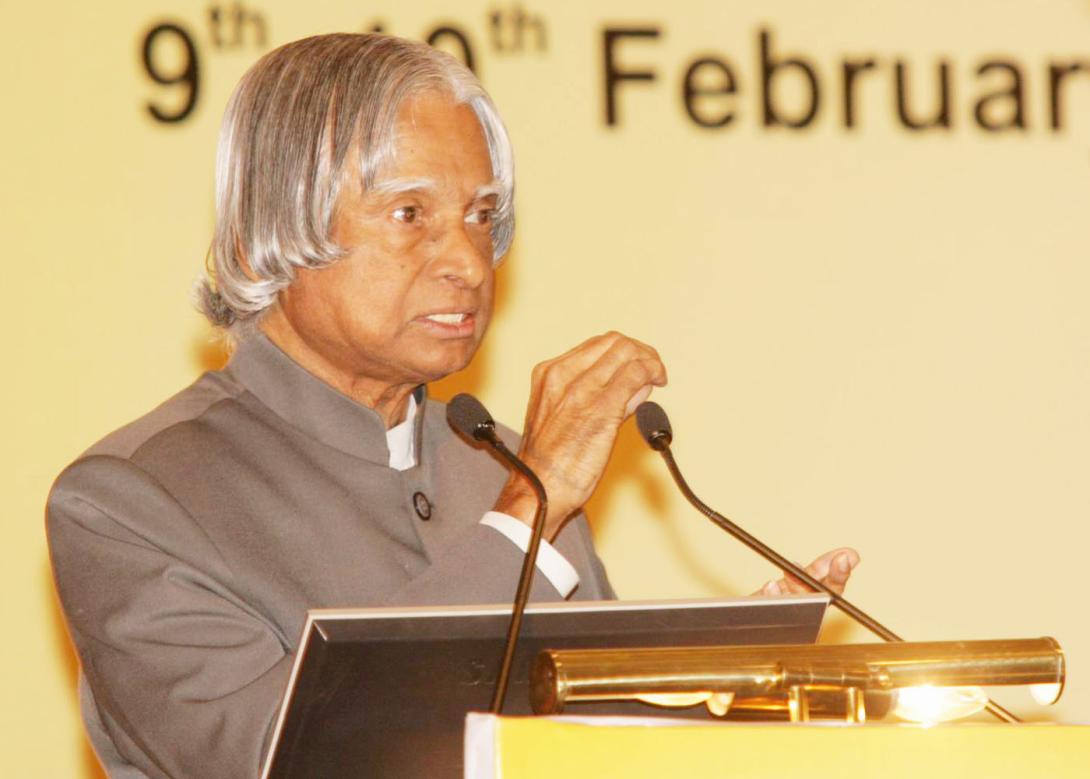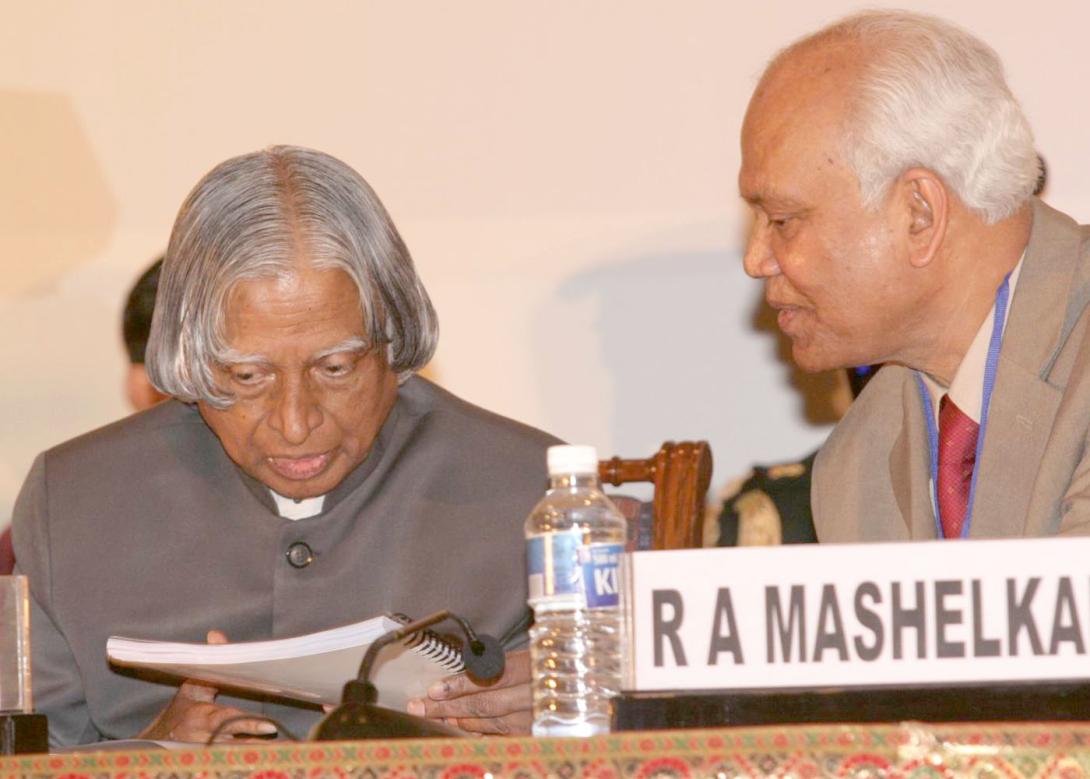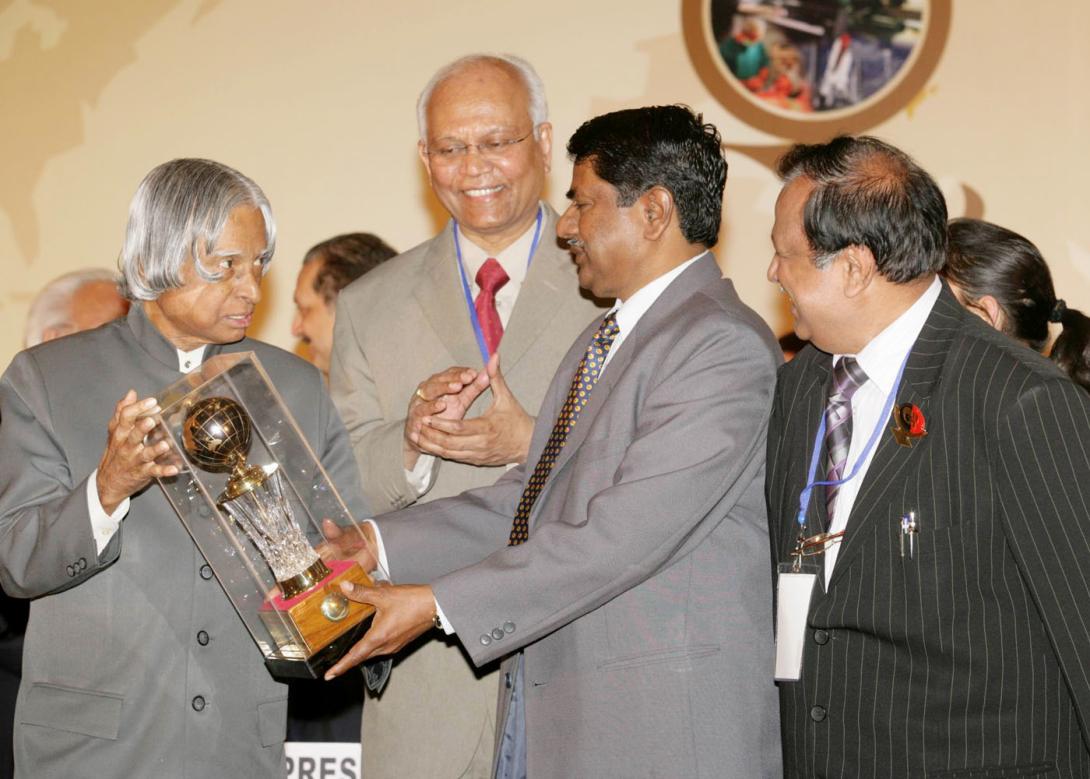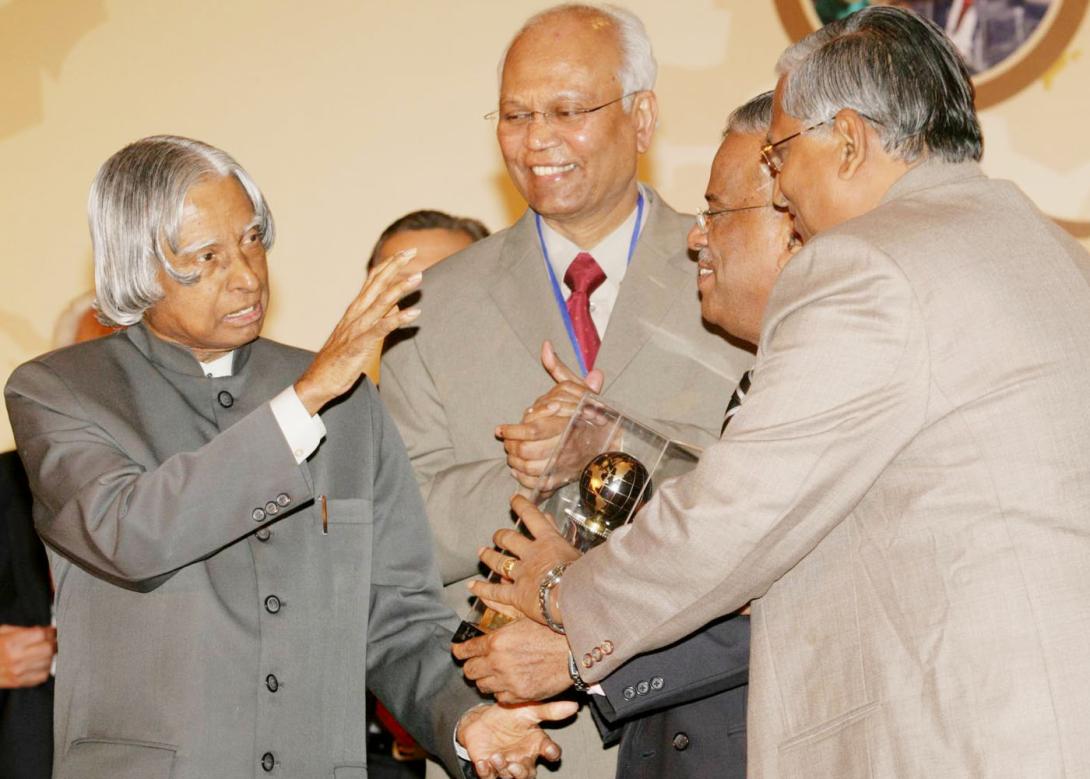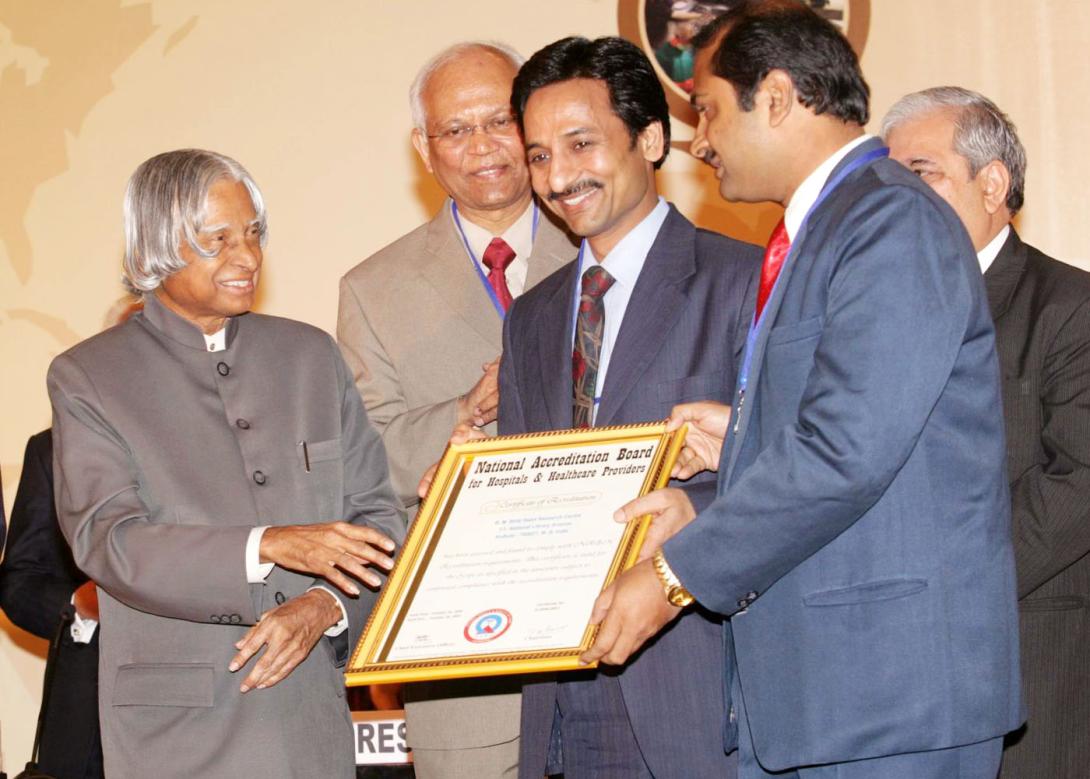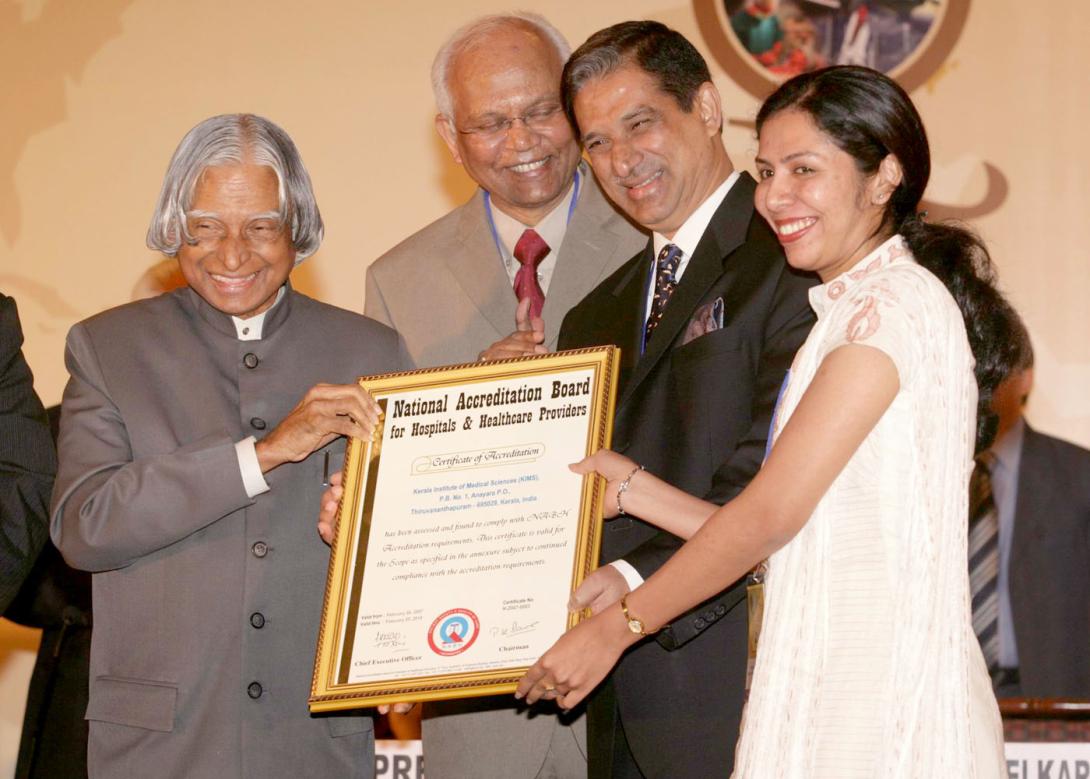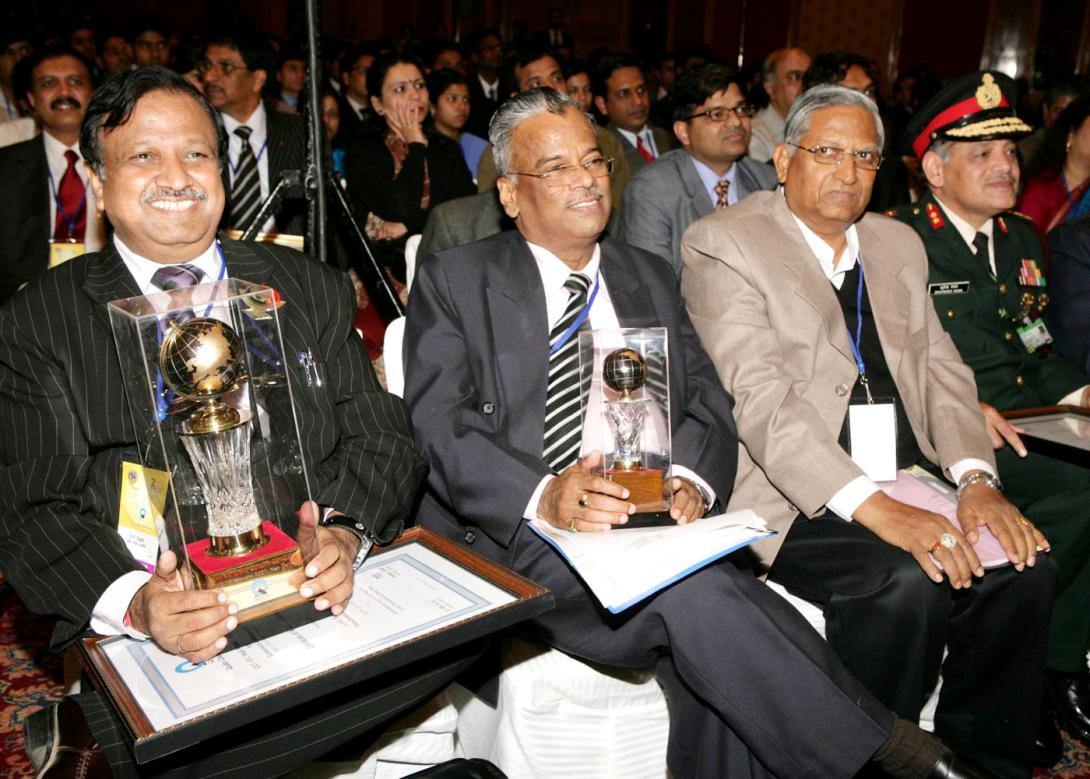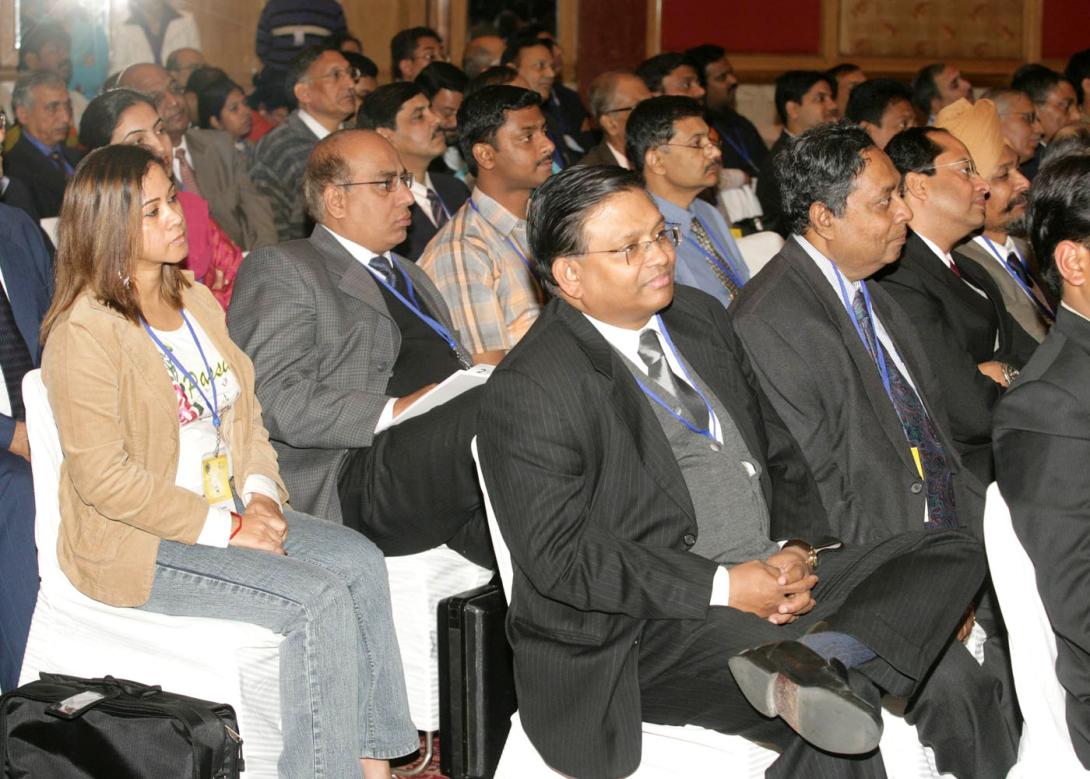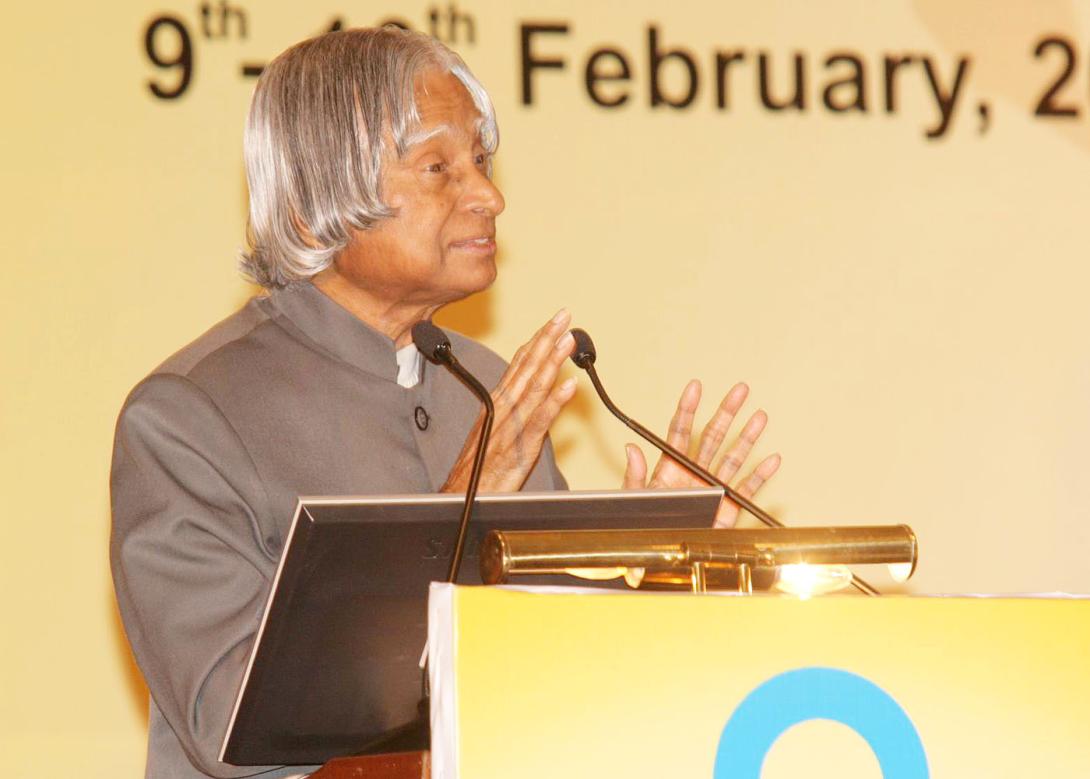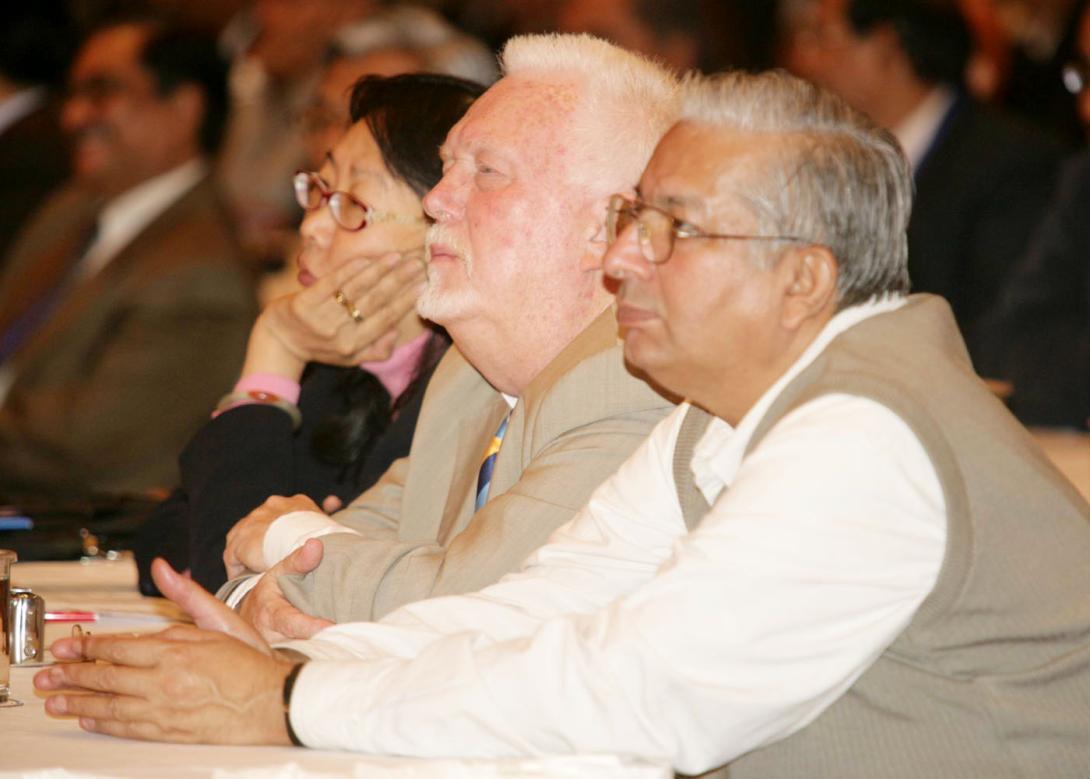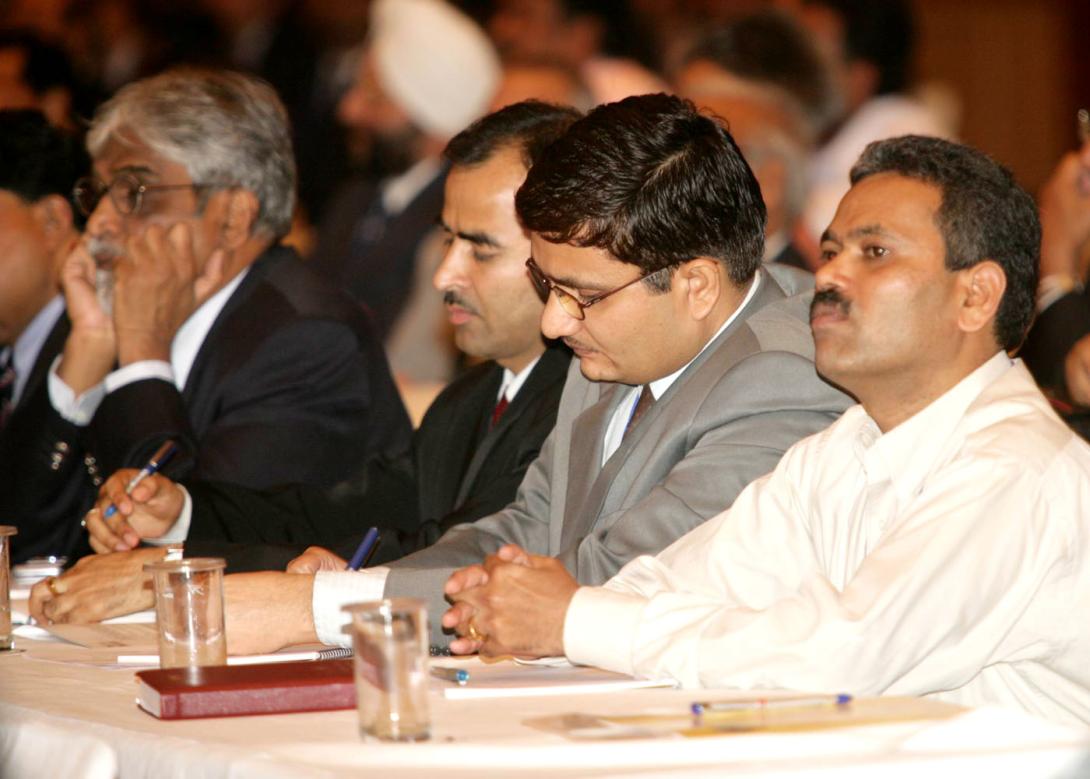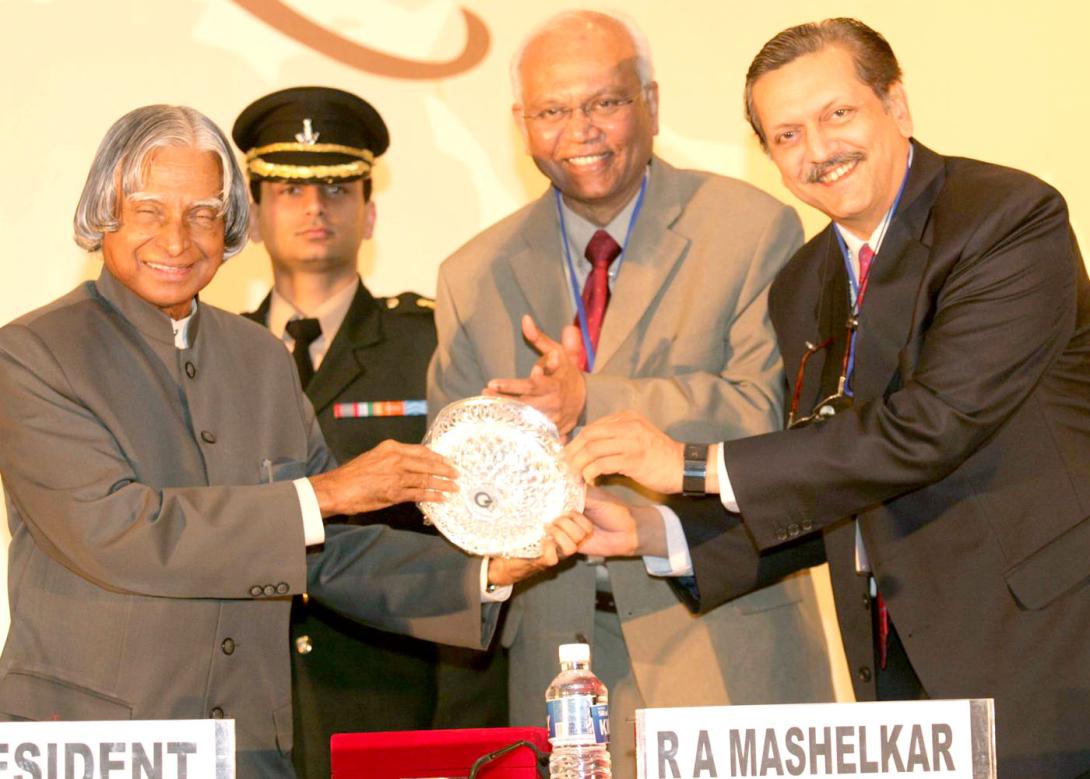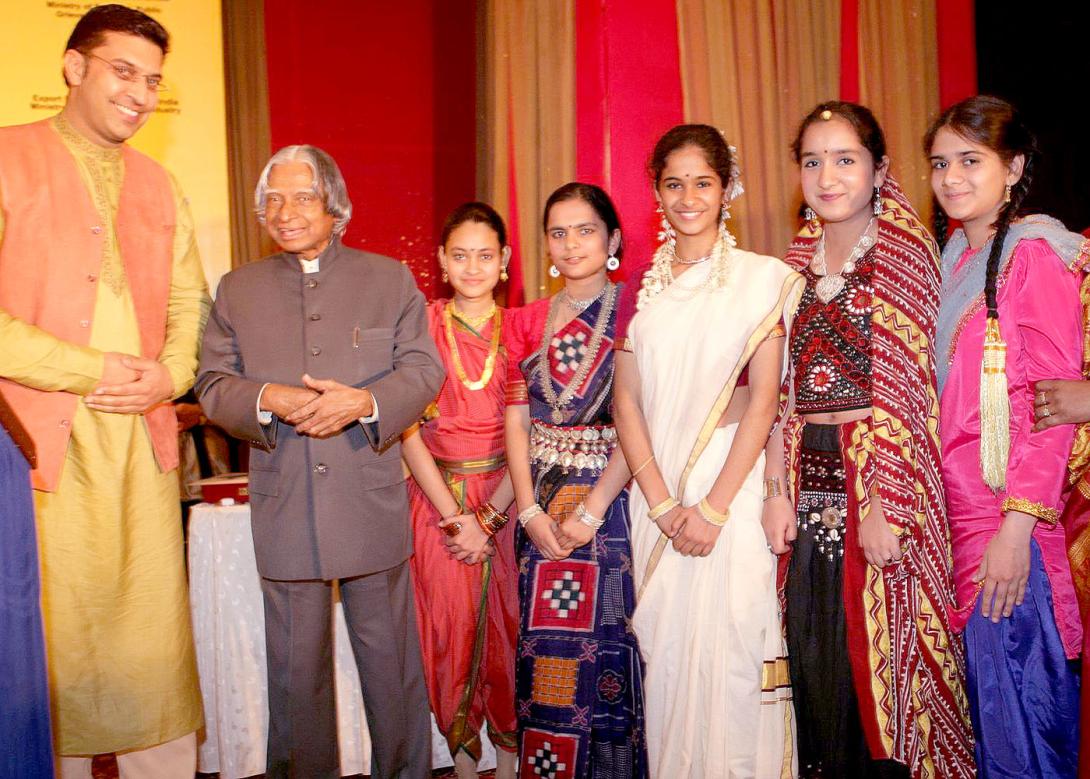Address at the Inauguration of the Quality Conclave - Vision 2020 for Quality India, New Delhi
New Delhi : 09-02-2007
The Mission of QCI: The National Well Being
"Quality is a Life Time Mission"
I am delighted to participate in the inauguration of the Quality Conclave ? Vision 2020 for Quality India organized by the Quality Council of India. My greetings to the award winners, organizers, policy makers, industry captains, entrepreneurs, educationist, quality specialists, consumers and students participating in this quality conclave. As you are aware, India is in the mission of bringing prosperity and smiles to the one billion plus people of the country particularly uplifting and improving the quality of life of 220 million people who are at present living below poverty line. While the Indian GDP is growing at over 8% per annum, we need full participation of the people for achieving the required targets of our growth and realizing high national prosperity index. My definition of national prosperity index is equal to GDP including quality of life for all coupled with value system. It is essential to ensure that all the citizens are empowered with good quality of life encompassing nutritious food, good habitat, clean environment, affordable healthcare, quality education with value system and productive employment leading to the comprehensive qualitative development of the nation. Even though you cannot take up all aspects together, you take two or three issues which will make difference to the life of people. In this context, I would like to talk to you on the topic ?The Mission of QCI: The National Well Being?
Contribution of QCI
I am glad to note that the Mission of Quality Conclave ? Vision 2020 is ?to help India achieve and sustain total quality and reliability in all areas of life, work, environment, product and services at individual, community and social levels?. I studied some of the recommendations of the first conclave on quality which has addressed the problem pertaining to the improvement of quality systems in SMEs, accreditation of hospital management, enhancement of quality programmes in medical and engineering education and creating a quantitative and qualitative measure of evaluation of services. I am sure QCI will interact with the concerned government, industries and institutions and assist them in implementing these recommendations in a time bound manner.
First, I would like to discuss about my experience in evolving a quality culture and the quality interventions needed in agriculture, education system and medical system to enable the benefits of quality which has presently percolated in the urban areas to reach our rural people.
Evolving the quality culture: My Experience
During the 1970s, I was working with my team in ISRO in Thumba near Thiruvananthapuram in the design, development and launch of the first Satellite Launch Vehicle of the nation, SLV-3. First time in India, it was an important project to be completed within a time frame of seven years. It had 64 Subsystems and 20,000 sub-subsystems and more than 100,000 components. Design, development and realization of hundreds of components encompassing several new disciplines for the country was a big challenge in technology and management.
Learning for quality: Looking back, I see how we learnt day by day on the quality aspect needed during the life cycle of the project. We initiated innovative concepts of quality mechanisms, standards, procedures and documentation. I will come to that in a moment. Let me first tell you one most important factor needed for ensuring quality. That is the quality of people, attitude and commitment to the given tasks with focus only on mission success. Spotting the talent, selecting the right persons from the right tasks and facilitating them to perform in a free environment is the fundamental requirement for quality. At that point in time, we were in the preliminary stage of development of the new technology related to spacecraft and launch vehicle and the concept of quality for space system was in very nascent stage at that time.
Developing quality culture: Initially, quality was synonymous with inspection of materials, processes and components. From there, we had to conceive concepts of quality control, quality assurance, product assurance, flight readiness and mission readiness. The integrated action on the shop floor by the quality assurance team will ensure reliability of the system. Today they have become common practices. But then at that time it required enormous efforts to make people accept the quality discipline and inculcate standard practices in the overall scheme of development and realization of launch vehicle and spacecrafts. The main challenge was to ensure overall mission quality and reliability at every step involving thousands of parts, sub-assemblies and assemblies, their integration and validation. A total life cycle quality environment through concept ? design ? development ? realization and flight testing was established by our team so that we translated our designs as reliable products for the mission.
Quality is built in design: After the completion of a design phase we divided the whole activity into three parts: device, sub-system and system. Device reliability should be 99.999; sub-system reliability should be 99.98 and the overall system reliability should be 99.5. The sub-systems were developed by both work centres within VSSC and certain external industries. While studying the quality of products designed and by different agencies, I found a unique phenomenon. Some sub-systems after design and development were able to get qualified for flight after 3 or 4 tests. In some cases series of tests were involved before its gets qualified for flight. In one case, the system was not cleared even after 15th tests. A system review team was formed. It established an important aspect that whenever the sub-system had gone through detailed design, systematic design review, the system manager was in a position to realize the product within a few tests. Wherever adequate time had not been spent in detailed design, series of tests and modification and leading to a large iterative process. Based on this experience, in ISRO a policy was made that the time spent in design should be 60%, development should be 20% and the testing should be 20%.
The Quality Leverage
The best way to achieve quality is to build it into the design. The scope for building quality into a product decreases as we move along the product life-cycle from design to manufacturing to servicing and product support. Therefore, for world class quality, it is essential to have indigenous R amp; D and design.
Quality Assurance in LCA: In my recent experience with LCA, I found that the design of LCA took around 10,000 man years, the design review was carried out for 100 man years, the system testing has been done for over 10,000 hrs. In addition, the system went through pre-flight review, flight readiness review and post flight analysis. The results of the post flight analysis go as the inputs for the design improvements. Because of extensive design, design review and simulator tests, when the test pilot came back after flying the first LCA said he felt that he was flying the simulator flight.
Of course, in all these launch vehicles, aircraft systems, apart from design and development of systems lot of ground equipments like launcher, test bed, ground simulators, Ground Checkout System, launch console have been designed and built with quality and reliability specifications. So many systems have been built in the country we have adequate database in the establishment of quality and reliability of systems. QCI may like to visit the establishment like DRDO, ISRO, HAL who have established not only the methodology for the design, development, testing and production but also the documentation of the systems at each stage. Without proper documents neither a design review will take place nor will a flight review take place. The Quality Council of India (QCI) has to study these organizations and evolve a proven quality and reliability model for applications. During the LCA and Launch Vehicle Design, we had developed software quality assurance method. In the commercial sector with the country producing over $ 45 billion dollars worth of automobiles and accessories including auto components they have also developed a robust quality assurance system. In the IT sector we are producing $ 36 billion worth of products including the export of $28 billion worth of products and services. Technology has three important dimensions, viz. competence in design and software engineering, process engineering and production capability. Quality management is essential to improve our competence in all these three dimensions. It will enable us to understand the customer?s aspirations and deliver quality products to meet the customers requirements, using available knowledge, skills, infrastructure and manpower.
QCI may like to study all these systems and evolve a Indian quality assurance standards for design, development and production of various types of goods and services needed by the country and for its export. Evolution of accreditation doctrine and eligibility criteria for selection have to be based on experience and track record of the institution. Now let me dwell upon quality in agriculture and food processing which is an essential component of developed India vision 2020.
Quality in agriculture and food processing
During my visit to various parts of the country and interacting with the farmers, I find that the farming is one area which can benefits substantially through quality system support. I would like to give two successful examples.
Seed cotton productivity: I visited a village called Gheri Buttar near Bhatinda in Punjab, where I met the farmers who have successfully increased the production of seed cotton from four hundred and sixty kilo gram per acre to eight hundred and sixty kilogram per acre in the year 2005. This has been achieved through a productive partnership between farmers, agricultural scientists, textile industry supervisors and the Government by following a scientific approach to farming, provision of quality inputs, strengthening of quality in every farming steps, adopting pre-harvest and post-harvest techniques with an assured market for quality products namely seed cotton. Most important action is to enable farmers to get quality seeds, quality fertilizers and quality pesticides from cooperative societies. I have suggested the farmers in that village to mount a programme of second green revolution in Cotton meaning that instead of selling the cotton produce directly in the market, they should add value to certain quantity of cotton into yarn, cloth and apparel in the village complex itself and market it in the national and international markets which again would need quality standards for processing, storage, packaging and delivery.
Food grains productivity: An experiment has been carried out by the TIFAC team in Bihar, in the RP Channel 5 and Majholi distributory and later extended to Paliganj and other 5 distributaries on the request of farmers. The productivity of paddy has increased in these villages from 2 tons per hectare to 5.8 tons per hectare and in respect of wheat productivity; it has increased from 0.9 ton per hectare to 2.6 tons per hectare. Presently, paddy and wheat crops are spread in an area greater than 2500 hectares involving 3000 farmers. This project has been carried out by the TIFAC, in collaboration with a farmer?s co-operative society, Indian Agricultural Research Institute (IARI) and the agricultural university in Pusa, Bihar. Using scientific method of farming involving soil characterization, matching the right seed to soil, seeding in time, fertilizer and pesticide selection, water management, pre and post harvesting methodology productivity has been more than doubled. Imagine the impact if every one of the six hundred thousand villages have the benefit of quality specialty in terms of its growth in GDP, employment potential and the increase in per capita income of the farmer.
Though I have talked about cotton and food-grains as an example same approach is applicable to vegetables and fruit processing system where technology, innovation and quality together can yield multifold increase in productivity and value addition. Next important area which I would like to discuss is quality in education.
Quality in education
You all agree with me that the real quality in education is fundamental to the quality of the human resource of the nation as a whole which is responsible for delivering the products and services to the community. In this context, I would like to share my conversation the President of Finland, Her Excellency Mrs. Tarja Halonen, who visited Rashtrapati Bhavan recently. During the discussion, I asked the President of Finland, what is the significance and how Finland is always in the first few positions in the competitiveness index during the last few years. She gave three reasons: (1). Education, Education, Education - it is the foundation for the Finland's Competitiveness, (2). Life Long learning is promoted in Finland - people continuously are in learning mode, (3). Women are empowered with Education. There is a message for quality people from this response. Presently, due to initiatives of National Council of Education Research amp; Training (NCERT), Ministry of Human Resource Development has resulted in the formulation of the National Curriculum Framework ? 2005 which aims to :
(a) Connect knowledge to life outside the school
(b) Ensure that learning shifted away from memorizing methods
(c) Enrich the curriculum to provide for over all development of children rather then remain textbooks centric and
(d) Make examination more flexible, non threatening and integrated into classroom life.
NCERT has taken a good initiative for text book development which will be introduced in various classes during the period 2006 to 2009. But, it is limited to schools following the CBSE syllabus. If the same can be applied to all the schools following various state syllabi also, it will have a larger impact. QCI can take the lead in suggesting a certifying mechanism for the quality of the books in consultation with all the stakeholders. QCI can also study and recommend guidelines for certifying the quality of teachers needed by our education system particularly in the rural areas. QCI can also suggest an accreditation policy for all primary and secondary schools particularly run by the Government with respect to status of infrastructure, the availability of affordable quality text books, extension of technology for capacity building, training and continuing education of teachers, appropriate assessment and evaluation system and proper conduct of examinations. The logistic facilities in schools should create proper hygienic environment to the students and they should be encouraged to develop quality consciousness in dealing with garbage, maintenance and upkeep of the environment and safety and security of the children. Now, I would like to present the need for quality in primary health care.
Primary Healthcare
When I visit rural areas of the nation, I find that there is an urgent need for improvements in the Primary Health Centres (PHC) particularly in remote areas with properly maintained infrastructure, doctors, paramedical staff, supporting staff and cost effective medicines. One of the important tasks QCI can undertake is to ensure that spurious drugs are not injected into the market. Of course, they have to take the assistance of pharma companies, doctors, paramedical personnel, chemist and druggist and the consumer in this important mission. PHCs should also have modern means of connectivity through telemedicine with district and multi specialist hospitals. The emergency systems in the primary healthcare centre should always be in a state of readiness and with ambulance facilities to reach the needy to specialized centres as required. QCI should bring out a directory of various primary health centres in six hundred districts of the country with the help of state governments and NGOs and provide guidelines for quality improvements in human resource, hospital infrastructure, training and availability of quality medicines. I have suggested the medical colleges and corporate sectors to adopt the PHCs in their neighbourhood of 100 kms. and provide support with the help of medical students and faculty. QCI may consider training the medical students for undertaking this task. Finally, I would like to talk about the quality requirement in infrastructure.
Infrastructure
Recently I was in Champaner village in Gujarat, where I could see the happiness of the representatives of 18,000 villages when continuous three phase power supply was switched on and made available to the last of the villages. This involves the upliftment of 30 million rural citizens with the provision of more opportunity for local employment, better health services and infrastructure facility, better computer based education to the children, help local dairy and milk testing process leading to the improvement in the lifestyle of the villagers and reduce migration from rural to urban area. I have explained the quality aspect of one type of infrastructure only. This is required in highways, roads within cities and villages, drainage, buildings, transportation system such as airports, railways, bus and seaports which form the face of the nation in the global environment. QCI may consider designing and implementing a mechanism through which the total quality consciousness can be brought about among the persons who provide these services to the community. One of the methods by which quality can be improved is through the feedback from the consumers. Let us see, how the consumers can contribute.
Feedback on quality of services
Though India is known to be one of the best destinations for outsourcing of many of the service and knowledge products, within our society we are yet to grow to appreciate and pay for the services. However, developed nations are gauged by the quality of service the citizens get from the government and from the corporate with which they do business. One mechanism by which we can continuously increase the quality of service is through feedback. This should be done by everyone without fear or bias. This feedback will enable all service providers to constantly improve the quality of service irrespective of what the service is. We will see a substantial increase in the services such as electricity, water, telephone, gas, transportation, education, insurance, banking, legal and police. The service providers whether they are in Government or in private sector have to take the feedback in the right spirit and provide customer satisfaction both in the short-term and in the long-term. Customers should also acknowledge positive developments and celebrate improvements. This scenario should lead to the pride of service and competitiveness.
QCI must work with different agencies to streamline the system existing for feedback and promoting its utilization for continuous improvement of the system.
Conclusion: Missions for quality council of India
There is a strong urge in our society to come out of century old ?Developing Country? brand name to ?Developed Country? status. To become a developed country, we must have competitive edge in the international market. Quality is very essential to achieve this. We must use competition as an opportunity to improve our quality and to transform from a technology importer to technology exporter.
Since I am in the midst of quality specialists from the industry, business and Government, I have the following suggestions:
1. QCI may consider bringing out a certain bench marks for our schools and primary care centres and development of a rating system which should be developed in consultation with academicians, parents, administrators and students and published in the web site. QCI should facilitate our schools, colleges and universities to develop employable skills among our youth.
2. Websites of government and corporate sector should be visited by the specialists of Quality Council of India and feed back given about the quality of the content, maintenance and the updation status.
3. The QCI may consider facilitating the customers and citizens for evaluating the services and providing objective periodic feedback for the improvement of services.
4. QCI may consider evolution of an independent evaluation system for efficacy of e-governance system established by the different agencies.
5. QCI may bring out a master plan for quality assurance encompassing all aspects of developed India 2020 vision with recommendations for all the functionaries who are responsible for provision of products and services. Particularly the QCI counseling will be valuable to sarpanches and district authorities.
6. QCI may consider creation of quality systems for the unorganized rural sector for farming, craftsmanship and rural cottage industries which can be propagated through the local elected representatives.
7. QCI may bring out case studies of successful QCI interventions specifying productivity increase, revenue enhancement and sustainability of the product. This information must be widely circulated to all the constituents in multiple Indian languages.
In essence, QCI must become an organization serving the one billion people of the country. With these words, I inaugurate the Quality Conclave ? Vision 2020 for Quality India. My best wishes to all the participants of the Conclave for success in their mission of promoting prosperity through quality.
May God bless you.

